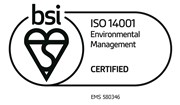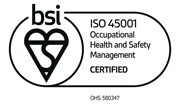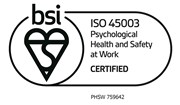DEFINITION FROM MOD DEFSTAN 05-135:
COUNTERFEIT MATERIEL
materiel whose origin, age, composition, configuration, certification status or other characteristic (including whether or not the materiel has been used previously) has been falsely represented by:
- a) misleading marking of the materiel, labelling or packaging
- b) misleading documentation
- c) any other means, including failing to disclose information
except where it has been demonstrated that the misrepresentation was not the result of dishonesty by a supplier or sub-supplier within the supply chain.
DEFINITIONS TAKEN FROM THE SAE:
SUSPECT PART
A part in which there is an indication that it may have been misrepresented by the supplier or manufacturer and may meet the definition of fraudulent part or counterfeit part provided below.
FRAUDULENT PART
Any suspect part misrepresented to the customer as meeting the customer’s requirements.
COUNTERFEIT PART
A fraudulent part that has been confirmed to be an unauthorised copy, imitation, substitute, or modified EEE part, which is knowingly, recklessly or negligently misrepresented as a specified genuine item from an original component manufacturer or authorised aftermarket manufacturer; or a previously used EEE part which has been modified and is knowingly, recklessly, or negligently misrepresented as new without disclosure to the customer that it has been previously used
Counterfeit Avoidance
Counterfeit avoidance must be maintained on all materiel that includes EEE (Electrical, Electronic, Electro-Mechanical), mechanical parts as well as raw materials and certificates.
Roke has a pro-active Counterfeit Avoidance Policy and process that have been developed alongside the requirements of DEF-STAN 05-135, AS5553 and AS6081 standards.
Any part that has been identified as having suspect documentation or missing traceability information shall be submitted to Engineering and QA for evaluation with all data provided by the supplier. Component Engineering will check the information provided for any known counterfeit parts being available on the open market. If the parts could be suspect, fraudulent or counterfeit, Engineering will request photographs/sample of the actual part and specific marking information from the supplier. Component Engineering will then investigate the information provided by the supplier to validate it is a genuine part. Additional testing will be conducted by an approved test house to AS6081 Level A.
All parts are checked upon receipt at goods inwards inspection to confirm they are genuine parts.
Obsolescence Management
where it has been identified by a supplier, or internally at Roke, that parts being ordered are obsolete and or may be going obsolete from their approved sources the component data shall be reviewed by the Engineering and QA teams for verification. if the parts are available from alternate sources, these items shall be sourced.
Roke procure parts from original component manufacturers (OCM), original equipment manufacturers (OEM) and approved franchised distributors that are contracted to supply the parts used in the company’s products.
if a part is identified as being obsolete and not available from the OCM, OEM, or franchised distributor and only available from non-franchised distributor sources then the Roke QA team shall audit the non-franchised distributor prior to orders being placed.
Applicable Standards and Specifications
SAE AS5553 : Counterfeit Electrical, Electronic, and Electromechanical (EEE) Parts; Avoidance, Detection, Mitigation, and Disposition
SAE AS6081 : Counterfeit Electronic Parts; Avoidance Protocol, Distributors
SAE AS6171 : Test Methods Standard; Counterfeit Electronic Parts
MoD KiD : Knowledge In Defence / Guidance for MoD Delivery Teams on the Avoidance of Counterfeit Material
DEF STAN 05-135 : Avoidance of Counterfeit Materiel
MoD Counterfeit Avoidance Maturity Model (CAMM)

















